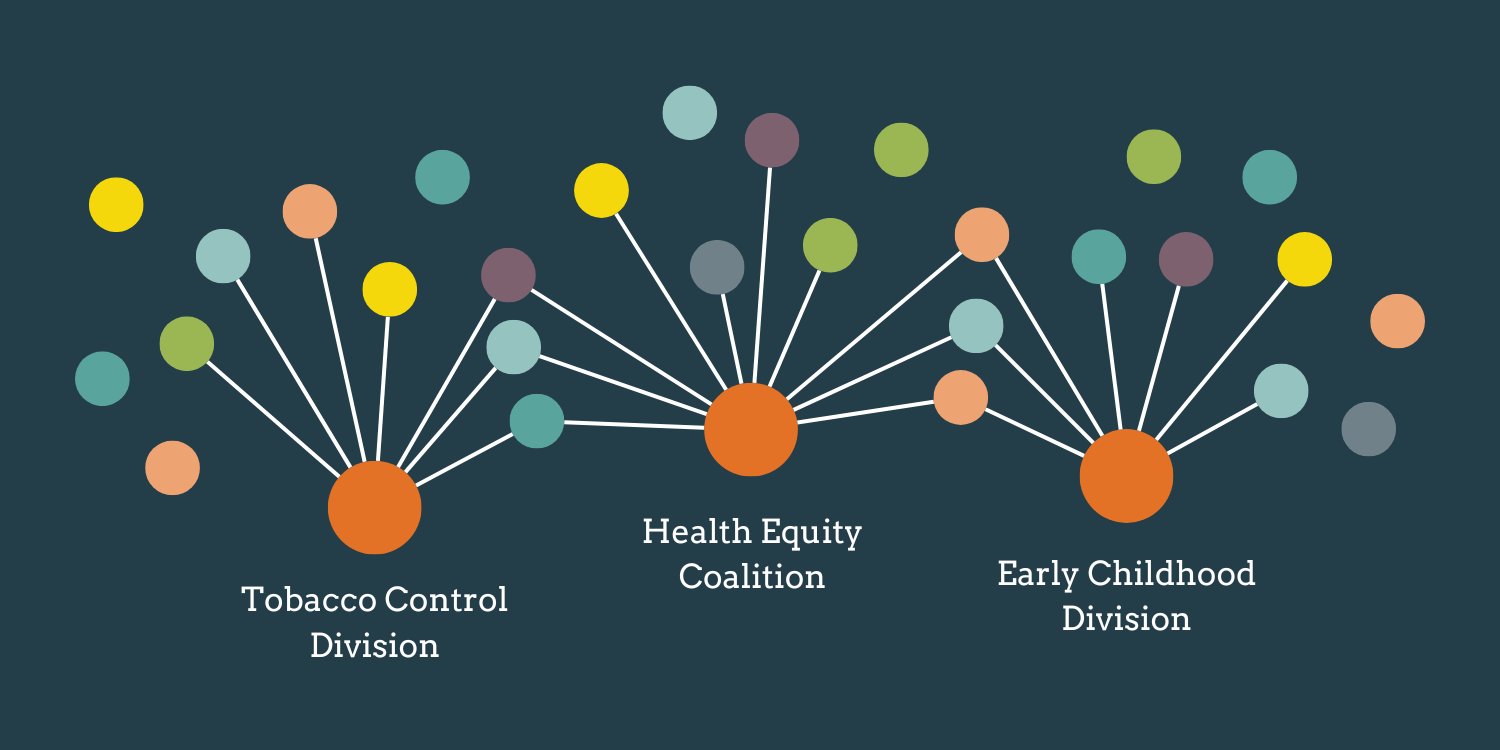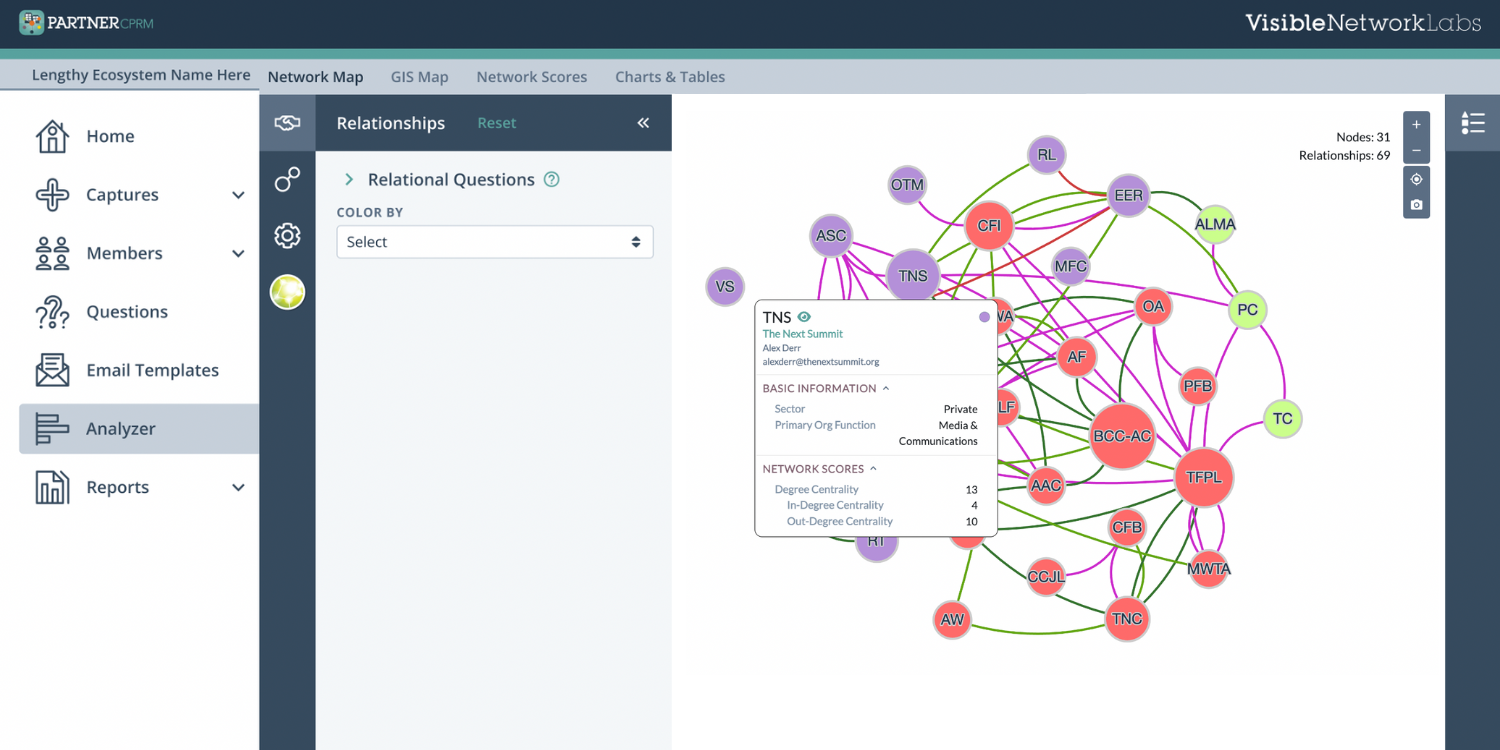Your network is one of your organization’s most powerful assets. The social capital we build through relationships with the community provide critical insights, resources, and opportunities for joint action to solve complex and wicked problems. However, cultivating dozens or hundreds of relationships across the community is difficult to track and manage – especially if you work in a large health department, non-profit, or foundation. Relationship silos – gaps in knowledge of your external partnerships – inevitably begin to form between staff, departments, and divisions, resulting in wasted time and lost connections to critical community members.
In this blog, we’ll introduce the concept of relationship silos and share some practical advice for identifying and eliminating them using a community partner relationship management approach.
Table of Contents
What are Relationship Silos? Why Are They Problematic?
In organizations deeply involved in community work—non-profits, social enterprises, or governmental agencies—relationships are the linchpin that binds various endeavors. These relationships can span a wide array, including donor relations, stakeholder engagement, volunteer networks, and collaborative initiatives with other organizations. Such connections are often the lifeblood of community-oriented projects and programs.
However, a common challenge is the emergence of ‘relationship silos,’ areas where fragmented communication and segmented databases cause an organization to lose sight of the full scope of its relationships with community partners. For instance, one department may be engaging with a community organization for a volunteer drive. At the same time, another is in talks for a collaborative funding initiative, all without either knowing the other’s involvement. This compartmentalization can result in duplication of effort and even contradicting engagements with the same partner, diluting the effectiveness of community involvement.
The impact of these relationship silos is not trivial. Not only do they create inefficiencies, but they also create a risk of losing vital relationships when key personnel transition to new roles or leave the organization. These silos contribute to confusion among community partners, who may receive mixed messages or redundant communication. Moreover, the lack of a comprehensive view of community interactions prevents the strategic leveraging of these relationships, often leading to missed opportunities for impactful involvement.

Identifying and Eliminating Relationship Silos: Where to Start
Addressing relationship silos within your organization doesn’t necessarily require complex or expensive tools—although those can help. Before diving into a comprehensive solution, here are some actionable steps you can take right now to start breaking down these problematic barriers:
Conduct a Relationship Audit
Begin by conducting a straightforward internal audit that maps out existing community relationships. Create a master list that includes all stakeholders, partners, and donors, along with their points of contact within your organization. This process will help you identify overlaps and gaps in your network. Relationship Mapping is a helpful process during an audit for identifying hidden connections.
Foster Open Communication
Encourage inter-departmental meetings where team members can discuss their relationships with external partners. Sharing knowledge openly can reduce redundancy and can help establish a cohesive approach towards partnership management. However, ensure these meetings are structured and focused to make the most out of everyone’s time.
Leverage Existing Software
If you’re not ready for a specialized tool, try utilizing functionalities in your current project management or office software. Tools like Slack, Microsoft Teams, or Asana can be adapted to centralize relationship notes and interactions. While not designed for this purpose, they can serve as a makeshift repository for the short term.
Use Community Partner Relationship Management (CPRM)
When you’re ready to elevate your approach, a CPRM system is the most comprehensive solution. Designed to centralize and analyze all your relational data, CPRM doesn’t just store information; it provides insights, charts interconnections, and even offers a bird’s-eye view network map. If you’re looking for a way to make a significant, long-lasting impact on the way your organization handles its community relationships, investing in a specialized tool like PARTNER CPRM is the way to go.

Get our monthly newsletter with resources for cross-sector collaboration, VNL recommended reading, and upcoming opportunities for engaged in the “network way of working.”
The Power of a CPRM Approach and System
To untangle this intricate web of relationships, Community Partner Relationship Management (CPRM) offers a powerful solution. Far more than just a glorified contact list or a spreadsheet, CPRM is an intelligent system designed to centralize all your relational data—information about who interacts with whom, and in what context—in one easily accessible place. By doing so, a CPRM provides valuable contextual information on each partnership. For example, it can provide insights into how frequently your organization interacts with a specific community partner, the nature of past projects, and even the sentiment of the relationship, whether it’s positive, neutral, or needs improvement.
Imagine the time and resources saved by simply having this information at your fingertips. If different departments or staff members know that someone else in the organization has already reached out to a community partner, they can build on that existing relationship rather than starting from scratch. Moreover, a CPRM system can be instrumental in project evaluation. If you’re running community health programs, for instance, and need to track the involvement and effectiveness of various local partners, a CPRM can offer crucial insights at a glance. Having this kind of centralized data can lead to a more efficient allocation of resources and better-targeted community interventions.
Why PARTNER CPRM?
While Customer Relationship Management (CRM) systems have been utilized for decades to centralize customer data, they often lack the capability to capture the nuances and complexities of community relationships. PARTNER CPRM fills this crucial gap.
Designed with the specific challenges and opportunities of community work in mind, PARTNER CPRM not only centralizes relational data but also provides a holistic bird’s-eye view of your community network. This includes network maps that visually represent how each entity in your network interacts with the others, revealing otherwise hidden opportunities for collaboration or resource sharing. It allows you to take a systems approach to your community engagements, facilitating data-driven decisions that can significantly increase the impact of your work.
By centralizing both data and relational context, PARTNER CPRM empowers your organization to work more cohesively, efficiently, and effectively in serving the community.

Next Steps: Request a Demo Today
Excited about transforming your community relationship management? Don’t miss out. Request a customized demo today to experience firsthand how Network Analyzer can redefine your network strategy. Discover how you can make your network not just bigger, but smarter and more strategic.

Get our monthly newsletter with resources for cross-sector collaboration, VNL recommended reading, and upcoming opportunities for engaged in the “network way of working.”
Work with our Team: Learn More!
At Visible Network Labs, we are always eager to delve deeper, explore further, and collaborate more effectively. If you’re interested in learning more about our work or how network science can benefit your organization, please reach out to us.






